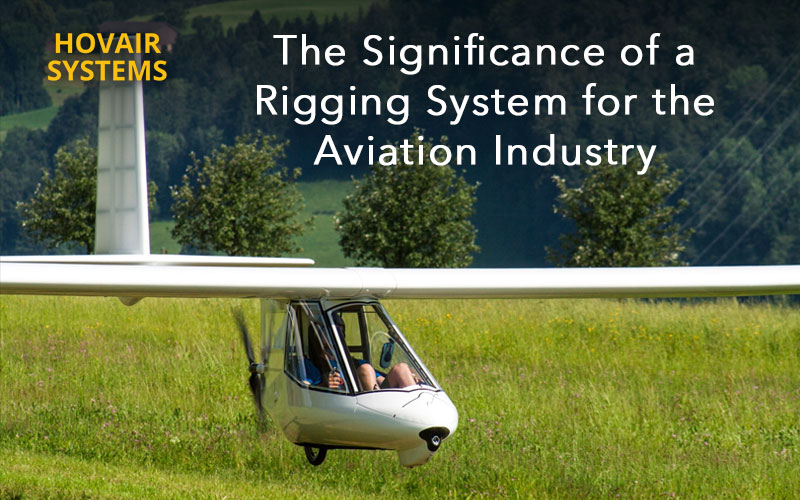With technological progressions shaping the landscape of each industry, the aviation industry benefits from the use of air-powered rigging systems. The presence and importance of a rigging system are experienced at different stages, be it during the manufacturing or the maintenance process. Both the processes being essential to the aviation industry, a rigging system acts as a material handling equipment.
Heavy-load equipment and components are an inevitable part of the aviation industry. Within the aircraft assembly unit, a rigging system helps in moving around and attaching different components of an airplane structure, such as the wings, an empennage, landing gear, a power plant, a fuselage, or the cockpit. Using conventional jacking equipment results in several limitations, such as safety issues or the necessity for a power source.
Using a Hovair rigging system, on the other hand, has several advantages, as it makes the maneuverability of heavy loads around the assembly unit easy, convenient, and seamless. Whether it is an awkward shaped or sized load or heavy machinery, a Hovair rigging system or lift bags is just what the aviation industry needs. Adding an extra and improved dimension to rigging capabilities, a manufacturer instantaneously trickles in efficiency and productivity into their unit, with all limitations eliminated. Following are the benefits of using a pneumatic rigging system:
- Can easily handle a load of up to 100 tons and beyond
- Can easily handle any shape or size load
- Can easily handle machinery or equipment with disproportionate weight balance
- Kits available with all hardware and components necessary to plug in and go
- No other source of power required – air-powered systems work on compressed air
- Liberty to choose from a variety of air beams, air pallets, and air bearing kits
- A suitable and appropriate equipment for clean room operations- environmentally friendly
- No specific training required- any operator can easily use the equipment
- No additional costs for the manufacturer- no training and no safety hazards
- A quick process leading to efficiency and high production
The Use of an Air Bag
Using an airbag jack, operators can suspend heavy-load equipment in the air in a safe, easy-to-use, and reliable manner. Manufactured using steel woven mesh or Kevlar, they complement material handling equipment. Sliding easily beneath heavy equipment, these bags filled with compressed air, provide the strength and grip required for moving around a heavy load. Having an interlocking surface, they grip loads in a firm manner.
Facilitating efforts to recover, tow, and rescue, an airbag plays a variety of roles. Requiring only a few inches of clearance, yet increasing in size exponentially, an airbag is compact and effective in its usage. Additionally, using lift bags, with a lift jack provides a supplementary layer of control with an air bearing system. With crank handles being present, an operator gets to level loads that require careful positioning, making height adjustments flexible and easy. Floating the load around an assembly unit, the operators gain complete autonomy over the process.
Using conventional equipment for moving around, heavy-loads has a variety of drawbacks. They require operators to maintain and inspect the equipment at regular intervals, specialized training is necessitated, they usually have load limits and require constant communication. Failing to follow through on these set limitations can result in fatalities and the creation of several hazards, which are a risk to the personnel and the load involved. Harnessing the use of traditional moving equipment within an assembly unit increases the presence of unnecessary costs. Thus, with excellent reliability, medium operating cost, and no complexity involved, pneumatic systems are the most cost-effective option when looking to execute the mechanical movement.

